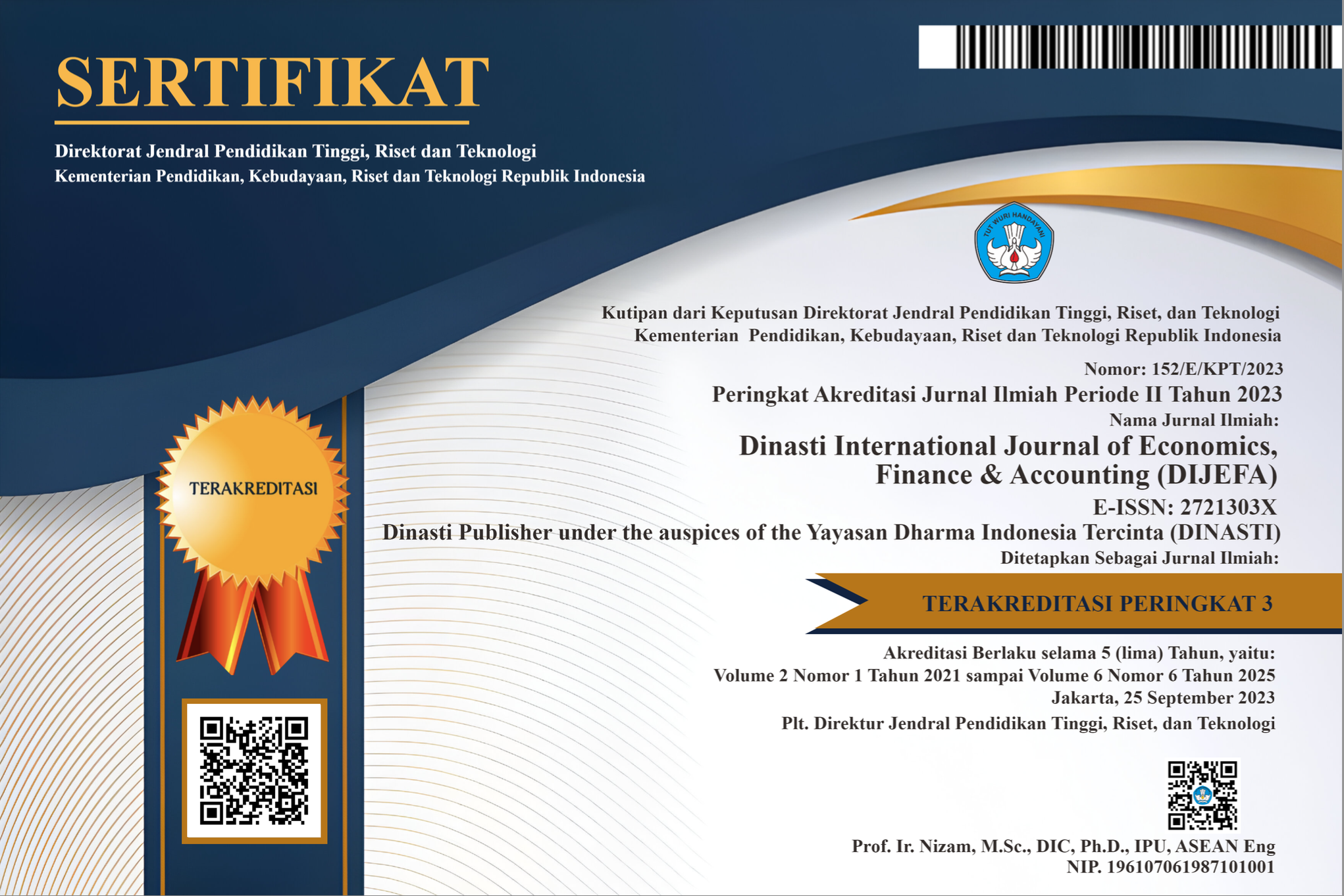Building Customer Happiness : Service Quality, Relationship Quality, and Customer Trust
DOI:
https://doi.org/10.38035/dijefa.v5i5.3593Keywords:
Service Quality, Relationship Quality, Customer Trust, Customer Happiness, Customer Satisfaction, Business Performance, LoyaltyAbstract
This study explores the impact of service quality, relationship quality, and customer trust on customer happiness. As customer satisfaction evolves into a deeper need for happiness, businesses are compelled to focus on factors that foster long-term relationships and trust with their customers. Through a quantitative approach, this research examines how service quality enhances relationship quality and trust, ultimately leading to increased customer happiness. The findings reveal a significant correlation between these variables, highlighting that customer happiness is strongly influenced by the level of trust and the quality of the relationship a customer has with a service provider. This study provides practical insights for businesses seeking to improve their service quality and build stronger relationships with customers, leading to higher levels of trust and happiness.
References
Parasuraman, A., Zeithaml, V. A., & Berry, L. L. (1988). SERVQUAL: A Multiple-Item Scale for Measuring Consumer Perceptions of Service Quality. Journal of Retailing, 64(1), 12-40.
Sweeney, J. C., & Soutar, G. N. (2001). Consumer Perceived Value: The Development of a Multiple Item Scale. Journal of Retailing, 77(2), 203-220.
Hennig-Thurau, T., Gwinner, K. P., & Gremler, D. D. (2002). Understanding Relationship Marketing Outcomes: An Integration of Relational Benefits and Relationship Quality. Journal of Service Research, 4(3), 230-247.
Morgan, R. M., & Hunt, S. D. (1994). The Commitment-Trust Theory of Relationship Marketing. Journal of Marketing, 58(3), 20-38.
Reichheld, F. F., & Schefter, P. (2000). E-Loyalty: Your Secret Weapon on the Web. Harvard Business Review, 78(4), 105-113.
Anderson, R. E., & Srinivasan, S. S. (2003). E-Satisfaction and E-Loyalty: A Contingency Framework. Psychology and Marketing, 20(2), 123-138.
Dagger, T. S., David, M. E., & Ng, S. (2011). Do Relationship Benefits and Maintenance Drive Commitment and Loyalty? Journal of Service Research, 14(3), 281-297.
Schmitt, B. (2003). Customer Experience Management: A Revolutionary Approach to Connecting with Your Customers. John Wiley & Sons.
Brady, M. K., & Cronin, J. J. (2001). Customer Orientation: Effects on Customer Service Perceptions and Outcome Behaviors. Journal of Service Research, 3(3), 241-251.
Homburg, C., Koschate, N., & Hoyer, W. D. (2006). The Role of Cognition and Affect in the Formation of Customer Satisfaction. Journal of Marketing, 70(3), 21-31.
Downloads
Published
How to Cite
Issue
Section
License
Copyright (c) 2024 Zulki Zulkifli Noor

This work is licensed under a Creative Commons Attribution 4.0 International License.
Authors who publish their manuscripts in this journal agree to the following conditions:
- The copyright on each article belongs to the author(s).
- The author acknowledges that the Dinasti International Journal of Economics, Finance & Accounting (DIJEFA) has the right to be the first to publish with a Creative Commons Attribution 4.0 International license (Attribution 4.0 International (CC BY 4.0).
- Authors can submit articles separately, arrange for the non-exclusive distribution of manuscripts that have been published in this journal into other versions (e.g., sent to the author's institutional repository, publication into books, etc.), by acknowledging that the manuscript has been published for the first time in the Dinasti International Journal of Economics, Finance & Accounting (DIJEFA).


























































